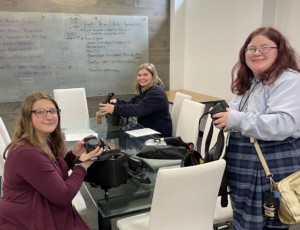Josh Jarrett: Snr. Program Officer, Gates Foundation

The Next Gen Challenge follows the premise that education systems and students can benefit from technology intervention, in a manner of speaking. What can technology companies — which seem to be off the
education radar at the moment — be offering to help improve college readiness in students, to name only one challenge?
One of our hopes for the Next Generation Learning Challenges is that the initiative can serve as something of a market signal, identifying significant barriers to college readiness and completion and highlighting promising solution spaces for more exploration. This general direction can help technology companies identify potential opportunities, guide their R&D, and connect with collaborators. The first wave of challenges focuses on: open, high-quality courseware; blended learning; deeper learning and engagement; and learning analytics. Each one of these has potential opportunities for technology companies.
As for what specifically technology companies would be challenged to offer, the buzz words of the day in describing the student experience are engagement, interactivity, relevance, personalization, etc. Fortunately, these are frequent objectives of technology companies in other realms. What does Zynga know about engagement and interactivity? What does Amazon know about relevance and personalization?
There is a very important caveat in that education is neither a product or a service, but a transformation in the knowledge and skills of the learner. This means technology companies have a lot to offer also have a lot to learn. We would like to see strategic partnerships emerge – between technologists and educators, between innovators and adopters – such that a more robust marketplace for innovation in education begins to emerge.
We’ve asked other technology savvy education reformers and some entrepreneurs about the role technology can play in education. Many of them say that layering technology on top of the existing system to accentuate it won’t really work. They argue that a new system needs to be invented. Do you agree with this assessment?
I agree with the first point (layering technology on top won’t really work), but not the second (a new system needs to be invented). On the second point, I do think we need some “green field” environments to develop the future models from the ground up to illustrate the art of the possible, and you will see us pushing hard in this area in 2011. That said, the very dynamism and diversity of our education system – and I’m speaking more of post-secondary education at this point – creates many lower-friction innovation spaces in existing institutions to pursue some pretty dramatic changes. Here are two examples that are very much part of the existing system, but a bit on the periphery.
The first is developmental education. Colleges do not really want to be in this business, we know the traditional instructional approaches did not work particularly well the first time around, and the “swiss cheese” of knowledge in each student lends itself to diagnostic assessment and competency-based acceleration to college readiness. We are seeing some interesting variable pacing models emerging from the National
Center for Academic Transformation’s course redesigns to Foothill College’s MathMyWay to some work underway at the Monterey Institute for Technology for Education to develop highly engaging, multimedia, modular instructional materials for developmental math.
The second is online learning. Fully 25% of college students in the US take at least one online course (per the Sloan Consortium). The vast majority of those courses are simply face to face courses migrated into a new distribution channel. Now that online learning has reached critical mass, the leading thinkers are exploring how rich data capture and Web 2.0 capabilities can create wholly different instructional experiences. We think this is the next frontier in online learning, particularly as growth plateaus as the economy recovers – shifting from growth to quality and student outcomes.
How will challenge grants address what is often seen as a cultural mindset — teaching and its administration should be done in isolation, behind closed doors, and, as much as possible, avoid openness?
This single initiative is not going to alone change embedded norms, procedures, and cultures. In many ways, this initiative is targeting the early adopters – giving those who already have the will to also have the way to make a serious commitment to improving student outcomes. We hope that those success stories, the student outcome data, and the refined, easy-to-adopt solutions that emerge will have a long-term impact on early majority and late majority institutions.
In 2020, what does education that accepts the challenge to motivate, operate and influence with technology look like?
I’ll start my answer by borrowing liberally from a new white paper on Next Generation Learning we just released:
In this paradigm of next-generation learning models, students and teachers—both secondary and post-secondary—will have access to high-quality, relevant, and engaging content in a variety of forms. Class time and structure will be more flexible, to adapt to the learning needs of the students. Students will have access to multiple sources of instruction and use assessment and diagnostic tools to help direct the pace and format of their learning. Teachers will tailor their instruction and guidance to ensure progress and mastery for all students, with a focus on those who have historically been under served.
Beyond that view from the teaching and learning level, here are a few characteristics of institutions in 2020, be they redesigned models or wholly new models (this specifically refers to post-secondary, but is more broadly applicable too):
1) Anchors in clearly defined learning competencies for flexibility, acceleration, and quality
2) Structured and clear credential pathways with strong case management
3) Leverages technology to improve learning and student services
4) Makes full use of data in decision making at all levels—e.g., institutional policy to instruction
5) Integrates seamlessly with K12, other pre-college systems, and transfer partners
6) Features innovative and accelerated academic catch-up
7) Designed to maximize working and learning student career progression
These might not be exactly right, and I’d welcome feedback, but that is the vision we see for institutions that are relentlessly focused on helping students complete high-quality degrees and certificates with genuine labor market value.







0 Comments
Leave a Comment
Your email address will not be published. All fields are required.